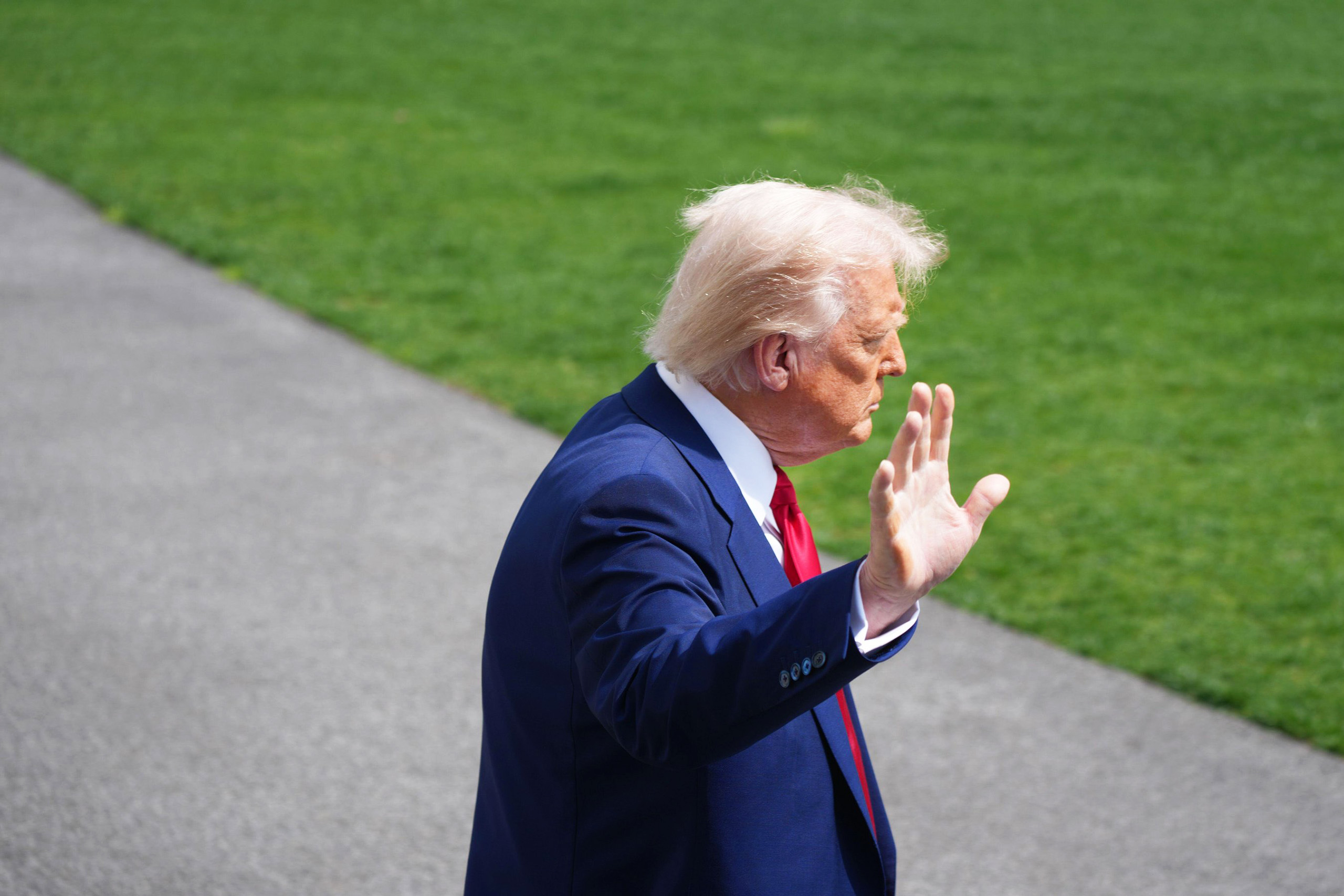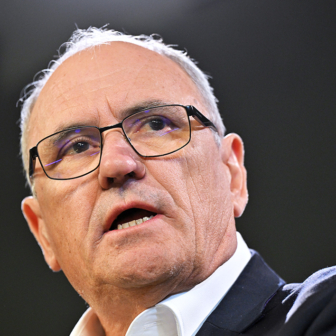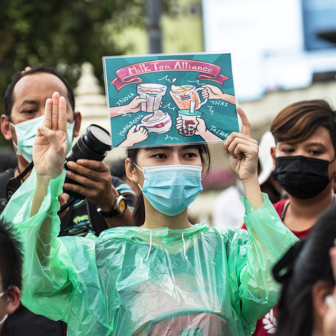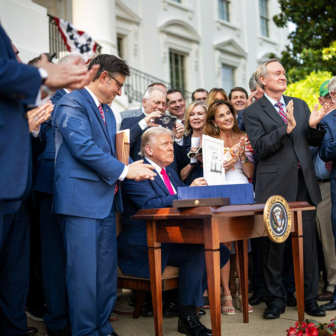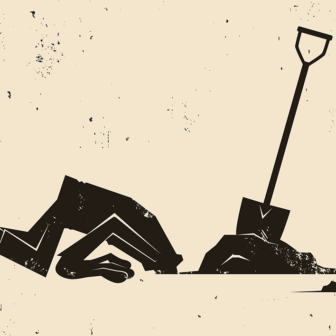Visitors to the Hotel Robert in Saint Pierre et Miquelon, just off the coast of Newfoundland, can view a straw hat that purportedly belonged to Al Capone. The notorious American gangster used the tiny French overseas territory as a base for smuggling liquor into the United States during the Prohibition era (1919–33), his illicit trade intensifying after Canada bowed to US pressure to curtail exports of alcohol to its southern neighbour in 1924.
Alcohol production had been initiated in the territory by another American, Bill “The Real” McCoy, after he discovered it imposed much lower taxes on alcohol production than the Bahamas, the original centre of illicit production. (French authorities helpfully allowed the importation of foreign sugar, molasses and rum into their colonies.) At the trade’s peak, in 1929, more than 5.8 million litres of whisky — worth more than $850 million in today’s dollars — were produced in St Pierre et Miquelon.
What brought the tiny territory’s illicit income to an abrupt end was the repeal of the Prohibition laws in 1933. Americans were able to buy alcohol at lower prices, no longer faced arrest when they did so, and no longer needed to line Capone’s pockets.
If Saint Pierre et Miquelon’s name sounds familiar, that’s probably because it was one of the stranger targets of Donald Trump’s “reciprocal tariffs” last week. While France itself escaped with a mere 20 per cent, the tiny territory will copped a massive 50 per cent tariff on its $3.4 million of exports (mostly shellfish) to the United States. To adapt a quip last Friday by George W. Bush’s one-time speechwriter David Frum, might the Trump tariff offer would-be McCoys and Capones the chance to Make Smuggling Great Again?
Compared to St Pierre et Miquelon (and even mainland France), Australia escaped fairly lightly from Donald Trump’s elaborately stage-managed performance in the White House Rose Garden last week. Copping the minimum tariff of 10 per cent, we were treated much less roughly than China (34 per cent, on top of 20 per cent already announced), Japan and Korea (24 per cent and 25 per cent respectively) and the European Union (20 per cent). The rest of list will already be familiar to readers, with the harshest treatment reserved for some of the world’s poorest countries, and oddities and inconsistencies abounding.
The Economist described Trump’s announcement as “the most profound, harmful and unnecessary economic error in the modern era.” The Wall Street Journal’s editorial board noted that America’s effective tariff rate would now be higher than the Smoot-Hawley Tariff of 1930, which helped put the “great” into the Great Depression. Trump’s new protectionist age, the paper added, marked “the end of US economic leadership.”
The way these “reciprocal tariffs” were derived serves to underscore the sheer lunacy of what Trump unveiled last week. As the Office of the US Trade Representative has spelled out, Trump’s advisers took the US merchandise trade deficit with each country, divided it by the value of US merchandise imports from that country, and then — if that number was greater than the arbitrarily specified minimum of 10 per cent — divided that number by two, representing the “50 per cent discount” Trump so magnanimously offered.
So, for example, the United States ran a US$294.5 billion goods trade deficit with China last year (the difference between exports of $143.5 billion and imports of $438.9 billion). Divide 295 by 439 and you get 0.67 (or 67 per cent); divide that by two and, hey presto, the tariff on imports from China is 33.5 per cent, rounded to 34 per cent (plus the 20 per cent already applied).
It’s a little more complicated, and baffling, in Australia’s case. US trade figures show that US goods exports to Australia in 2024 were worth US$34.6 billion and its imports from Australia $16.7 billion, giving a surplus of $17.9 billion: divide that number by 16.7 and the tariff on US imports from Australia should have been minus 107 per cent — a subsidy rather than an impost, that is! By the logic (if that’s what it can be called) behind these calculations, that’s the extent to which the United States has been “cheating” in its bilateral trade with Australia.
Of course, neither Australia nor any of the other handful of countries with which the US runs a surplus will be getting a subsidy. We don’t even get a 50 per cent discount. We just get the arbitrary minimum of 10 per cent.
In thinking about what all this means for Australia, it’s important to remember that — contrary to what Donald Trump and those around him think and say — those tariffs will be paid primarily by American consumers, not by Chinese, Canadian, Mexican, Australian or any other exporters to the United States. And, what’s more, Americans know it, which is why longer-term US household inflation expectations have risen since Trump’s inauguration to their highest level in forty-one years.
Those expectations will deeply concern the US Federal Reserve, America’s central bank, because history tells central bankers that if people (and businesses) expect inflation to remain high, they will behave in ways that make it more likely that it will remain high. Businesses, for example, will put up prices to claw back cost increases they expect to occur in the year ahead, not just those they have experienced over the past twelve months.
The direct impact of the 10 per cent tariff on Australia will be relatively small chiefly because the United States typically accounts for less than 5 per cent of our total exports of goods. Moreover, two of our most important exports to the US — gold (exports of which have surged to such an extent in the first two months of this year that Australia has actually run a surplus with the US for the first time since the Korean War wool boom of 1951–52) and pharmaceuticals — will apparently be exempted from the tariff, at least for the time being.
The products most likely to be adversely affected are beef (which is Australia’s largest single export to the United States, and for which the US is our largest market) and other meat, principally lamb (Australia’s fourth-largest export to the US). It’s to be hoped that beef exporters will be able to find alternative markets for whatever they’re not able to sell to Americans, as they did when China imposed punitive tariffs earlier this decade. (This time, though, they will face competition from other beef exporters, such as Brazil, that are also subject to “reciprocal tariffs.”) If beef producers aren’t able to find alternative markets, meat will probably be cheaper for Australian consumers at butchers’ and supermarkets.
The greater concern for Australia is the indirect effects of the tariffs via their impact on trading partners much more important to Australia than the United States — particularly China (which accounts for around 35 per cent of our total goods exports), but also Japan (a little over 13 per cent), Korea (7.5 per cent), and Southeast Asia (more than 12 per cent). The new US tariffs on imports are explicitly intended to discourage imports from those countries, with whom the US runs large bilateral trade deficits. To the extent that they succeed in that aim, those countries will likely import less Australian iron ore, coal, LNG and other material used in the products they export to the United States.
That would result in lower prices for those commodities — which is why the Australian dollar fell so sharply in the aftermath of Trump’s announcements. It’s also why Treasury has estimated that the indirect effects of Trump’s tariffs on the Australian economy will be nearly four times as large as the direct effects.
The effects on Australia would be worse if the federal government were to follow other countries (including China) in retaliating against Trump’s announcement by imposing tariffs on imports from the United States. Tit-for-tat retaliation is circular firing squad stuff: it simply doesn’t make sense to force Australian businesses and consumers to pay higher prices for things imported from the Americans just because the US government wants to force American businesses and consumers to pay higher prices for everything imported into the United States.
That’s especially so when you consider that Australia imports more than twice as much stuff from the US as we export to it. “Retaliation” would mean Qantas and Virgin would be paying higher prices for their new Boeings (so we’d all be paying higher air fares); farmers would be paying higher prices for their green-and-yellow tractors and harvesters (so we’d be paying higher prices for the food they produce — or more likely, farmers would have lower incomes); trucking companies would be paying higher prices for trucks (so we’d be paying higher prices for the things carried in them); and we’d be paying higher prices for cosmetics, pharmaceuticals and a range of other items we import from the United States.
The Morrison government, sensibly, didn’t respond to China’s extortionate tariffs on imports of Australian barley, wine, meat, seafoods and coal earlier this decade by forcing Australian consumers to pay more for the stuff we import from China. And, thankfully, it seems probable that the Albanese government’s response to the Trump tariffs will be similarly measured.
It’s also to be hoped that the government won’t succumb unthinkingly to pressure from Australian industries to impose so-called anti-dumping duties — tariffs, that is — on products diverted to Australia (among other countries) because they can no longer be exported to the United States.
That still leaves us with the growing risk that Australia could experience a protracted economic slowdown or even recession. The US economy now seems increasingly likely to succumb to a (completely self-inflicted) recession; and other countries, especially China, are less well-placed to ward off that downturn than they were during the global financial crisis, partly because of the huge amounts of debt they ran up responding to the GFC and the Covid-19 pandemic. If those factors are combined with more persistent inflation, the capacity of the Reserve Bank to ameliorate that risk by cutting interest rates would become more complicated.
More broadly, Australians, and in particular their political leaders — like their counterparts in Canada, Europe, Japan, South Korea, Singapore and New Zealand — need to be thinking clearly and coherently about the implications of a world in which the United States is neither a reliable and trustworthy trading and security partner nor even a “friend,” as it has been since midway through the Second World War.
Australia is not merely one of a minority of countries with which the United States runs trade surpluses. (In fact it runs larger trade surpluses with only three other economies — the Netherlands, Hong Kong and Singapore.) It is the only nation whose military has fought alongside Americans in every military conflict the United States has been involved in since 1917. It hosts crucial (to the US) military bases and intelligence-gathering facilities which, some say, would be nuclear weapons targets in the event of a conflict between the United States and an adversary with nuclear weapons. And we are now effectively giving the US foreign aid as part of the AUKUS agreement, the first US$500 million (of what will ultimately be US$3 billion) taken to Washington by defence minister Richard Marles in February.
All of that counts for naught with the Trump regime. And in that context, it is important to remember that Donald Trump is back in the White House because a plurality of the American people elected to put him there, in the full knowledge that he would do what he did last week. Which is why it is so important for Australians, and the people of America’s other traditional friends and allies, to understand that the American people have themselves changed. And so, therefore, must we. •
